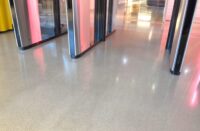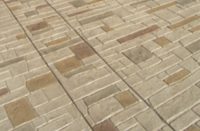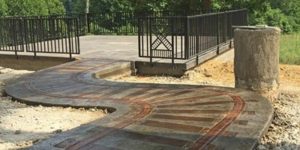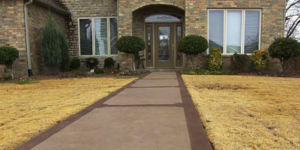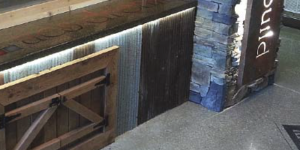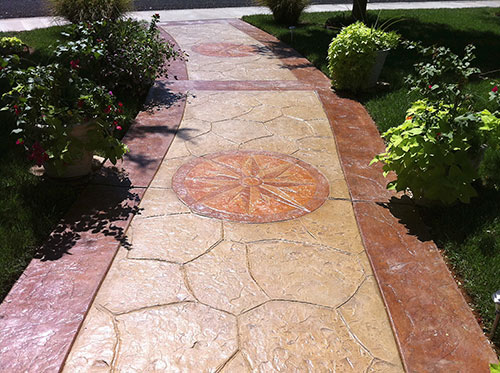
There are four different overlay systems used in creating decorative concrete floors: microtoppings, stampable overlays, multipurpose overlays and self-leveling overlays. All have different characters and makeups with which to achieve decorative looks.
Overlays can be temperamental if they are not installed properly and manufacturers’ technical data sheets are not read and followed to the letter. With any overlay system, preparation is the key to success and lack of preparation along with lack of doing your research will result in failure. Preparation and profiles as determined by the International Concrete Repair Institute are key elements in applications of overlays.
There is a lot of opportunity and money in doing overlays. It is just a matter of educating yourself and your crews as contractors on proper application practices, along with educating your clients as to what you can do for them to achieve a decorative concrete floor.
Microtoppings with mix designs from coarse to fine grade and colors from gray to white are used in resurfacing old, worn concrete floors or bad, undesirable concrete floors. With microtoppings we have the ability to rejuvenate these surfaces and give them the look of new concrete.
Coatings with coarse and fine mix designs are applied in layers to give microtoppings durability. Coarse-grade microtoppings have larger aggregate that helps to fill in small damaged spots on the floor and fill in our profile to give us a blank canvas. It sometimes takes two applications of the coarse to achieve that blank canvas. Fine microtoppings are then used to fill in the coarse grade and smooth out the surface for our finished floor, making it ready for stains, saw-cut designs and so on.
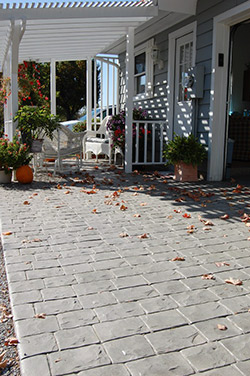
Stampable overlays are used both indoors and out to give a concrete slab the appearance of wood, tile, brick or stone. Stampable overlays are gauge-raked out at 3/8 inch to 1/4 inch, depending on the depth of the pattern being used, and usually at no more than 1/2 inch without the use of a larger aggregate, such as 3/8-inch pea rock. Stampable overlays applied at 1/2 inch or greater are usually not cost-effective.
These overlays are cementitious-based products, so they will take staining very well and can be integrally colored.
Keep in mind that overlay products are only as good as the concrete they are going over and the applicator putting them in. So do not oversell a stampable overlay as a fix-all to a slab that is heavily spalled or heavily cracking from movement.
Products like this are great tools to have and know how to use. They can expand your business and keep your crews working in down times.
Multipurpose overlays have a large-sand makeup and are made for rebrooming, spray textures (in horizontal, vertical and stencil work), texture troweling and as an underlayment. Multipurpose overlays offer the most ability to push your creativity to the limit with a trowel, hopper gun or broom.
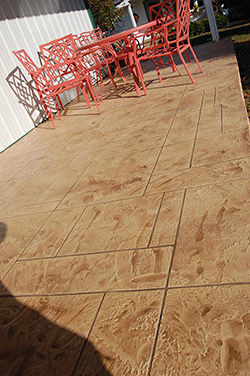
Self-leveling overlays are just that. Their makeup gives them the ability to flatten out on their own with help from a metal squeegee. They can be used by themselves to make a concrete floor look new or as an underlayment for other flooring products.
Self-levelers are the most temperamental of all overlays. They have a short working window. Once they are down, you hit them once and leave them (because overworking can be detrimental). This is one product where the liquid recommended by the manufacturer and the amount recommended should be followed to the letter. If too little is used, it will not flow and set. Too fast, too much, and it will crack. Either way you will be tearing it out. So always do your homework and follow the manufacturer’s technical data sheets.
Overlay product applications are a very successful business. You just have to take pride in what you do. Never cut corners, don’t oversell yourself or the product, always have enough people to perform the task at hand, and always read the manufacturer’s technical data sheets. There are educational programs out there through your distributors and manufacturers, so take advantage of them and be a success.
Overlays bring out the true artist in the applicator. We are all learning new tricks every day, and whether you work with a trowel or decorative saw cuts, the sky is the limit. Do samples and play with the products before you tackle your projects, and you will be amazed at what you can create.
